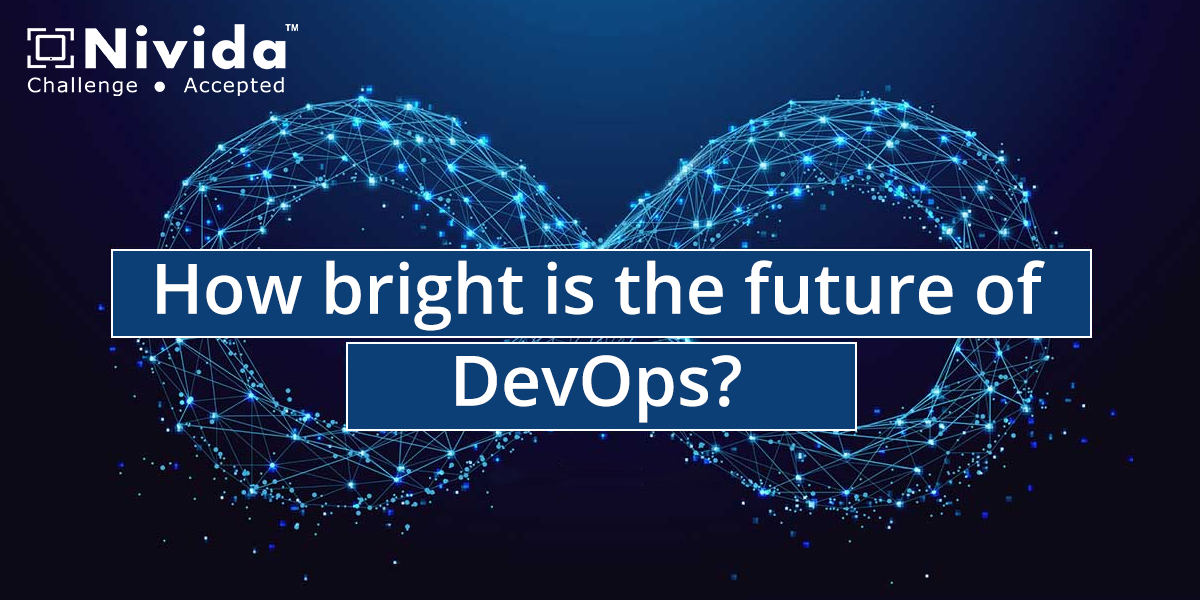Automation, as well as Digitalization, have flourished over the past few years, and this trend is only expected to continue. DevOps has proven itself to be a critical software development strategy for a smooth transition into the digital age.
Recent industry research indicates that the existing market of DevOps will be worth more than $20 billion by 2026, expanding at a compound annual growth rate (CAGR) of 24.7% between 2019 and 2026. Rapid software development, delivery, enhanced quality, and greater customer happiness have all been made possible because of DevOps.
DevOps, like the rest of the business world, is always adapting to stay current with the latest trends and requirements. The future of DevOps, and the patterns you may anticipate, will be examined.
Serverless Computing:
In large part due to the high upfront and ongoing costs of maintaining a traditional server infrastructure, serverless architecture will become increasingly popular among DevOps teams. Many DevOps teams today use modular components that provide a high-level view of the entire process. Adapting these modules to a serverless architecture will free up development teams to concentrate on releasing and improving the product, rather than dealing with the administrative burdens of managing the pipeline.
Overall DevOps processes, such as the entire software life cycle can be streamlined using serverless computing. As an added bonus, serverless computing lightens the developer's strain by handling mundane server tasks like cloud monitoring and software updates. Other major selling points include adaptability, dependability, quickness, and low price.
Microservices Architecture:
In the information technology field, the architecture of microservices has been rising in favour as a replacement for monolithic structures, and this trend is projected to continue. When it comes to scaling up or down, microservices architecture is the way to go. For applications structured as a group of interdependent services, the next logical step is a microservices architecture pattern. With microservices, it's simple to isolate the problematic service without affecting the rest of the programme in the event of a failure.
Shorter software release intervals are possible thanks to DevOps and microservices architecture, which allows distributed teams to innovate more quickly, keep their tech stack and standards under tight control, monitor performance indicators, and cut down on consumption time.
Low-Code or No-Code Apps & Platforms:
Many businesses now use low-code/no-code development to rapidly release new applications in response to user demand for new features and functions. Combining DevOps and low-code methods is revolutionary. It helps engineers become more agile and gives the company an edge in the competitive software industry.
Because of the streamlined visual interfaces of low-code programmes, even non-technical "citizen developers" can make meaningful contributions to programme advancement. Developers and DevOps engineers, employing low-code tools as well as platforms that allow drag-and-drop features and other extensions, are expected to play a major part in this movement, alongside end users. All stages of software creation are backed by these low-code app dev tools: analysis, concepting, coding, design, deployment, testing, as well as documentation.
DevSecOps:
It would be wonderful to integrate as well as automate the security into DevOps operations as a common practice thing among organisations. A sudden jump to DevSecOps is gaining traction and is only anticipated to accelerate. The DevOps market is projected to grow from $2.6 billion in 2018 to $5.9 billion in 2023, representing a CAGR of 31.2%.
As a result, more businesses will begin incorporating security measures into the software development life cycle at an earlier stage. In 2022, testing tools will increase in popularity and solutions for integrating with CI/CD pipelines will become more streamlined. DevSecOps is a development methodology that aims to increase both the velocity and the quality of software releases by enabling developers to more easily and reliably monitor and fix security issues that arise at any point in the development process.
GitOps and Kubernetes:
When it comes to operational infrastructure, Kubernetes is a framework for managing containers that is becoming increasingly popular. After 2022, Kubernetes' use in the software development industry will grow substantially. Getting a Kubernetes cluster up and running locally on a developer's machine will be much simpler. Kubernetes's security, as measured by infrastructure-as-code (IaC) auditing, is also expected to garner a lot of attention.
A Kubernetes-related infrastructure trend, GitOps enables IT operators as well as developers to use Git for managing the clusters as well as to create efficient, secure apps without misconfigurations. Developers will be able to build, test, and deploy software more quickly because of the consistent delivery and automated release of incremental changes.
AI and ML:
It's no secret that AI and ML have altered the modern corporate landscape. All stages of the software development life cycle (SDLC) are expected to be even more streamlined and accelerated by AI/ML in 2022. Intelligent automation, better feedback, and alert management are just a few of the ways in which it helps DevOps teams operate better.
The importance of cutting-edge analytic tools like predictive analytics is rising as the market undergoes change. Using AI, the DevOps pipeline may be investigated proactively to find issues and possible solutions. Data mining, deep learning, modelling, as well as statistics are all made possible by integrating AI and ML, and can thus be a crucial component of your daily operations.
Conclusion:
DevOps is always changing and adapting in order to propel large-scale IT revolutions that directly support strategic business aims. As a result of the aforementioned developments, businesses will be able to quickly advance beyond automation and concentrate on enhancing their results in a steady fashion. These tendencies serve as impetuses for enhancing interaction and communication between the development, IT, and business groups, and for establishing a reliable and consistent release pipeline.

